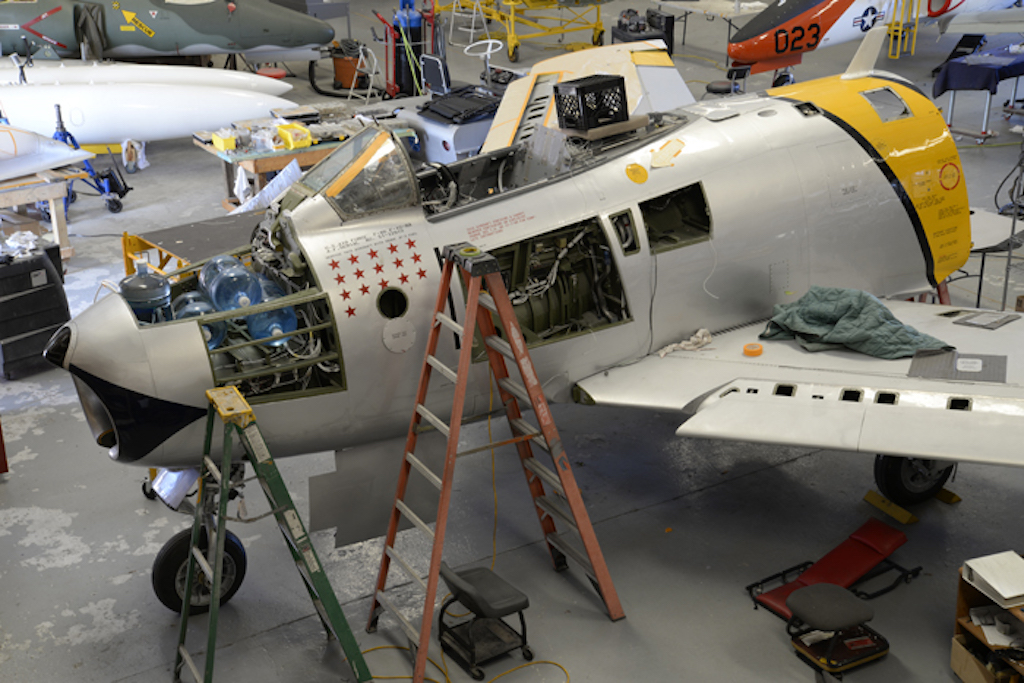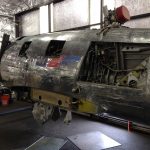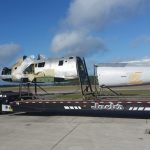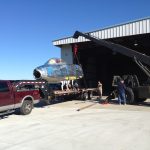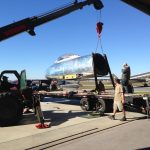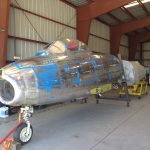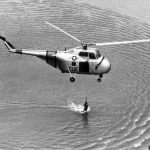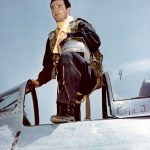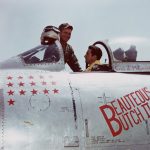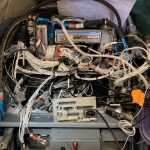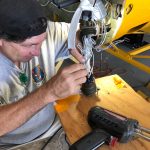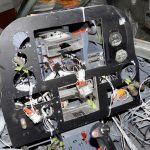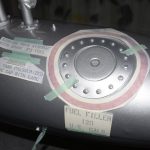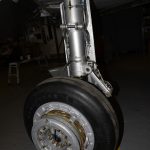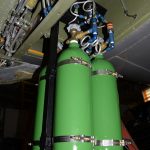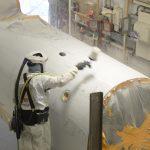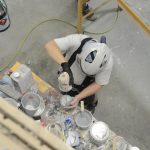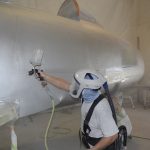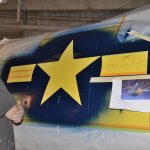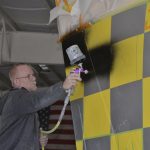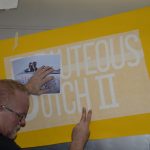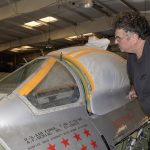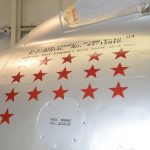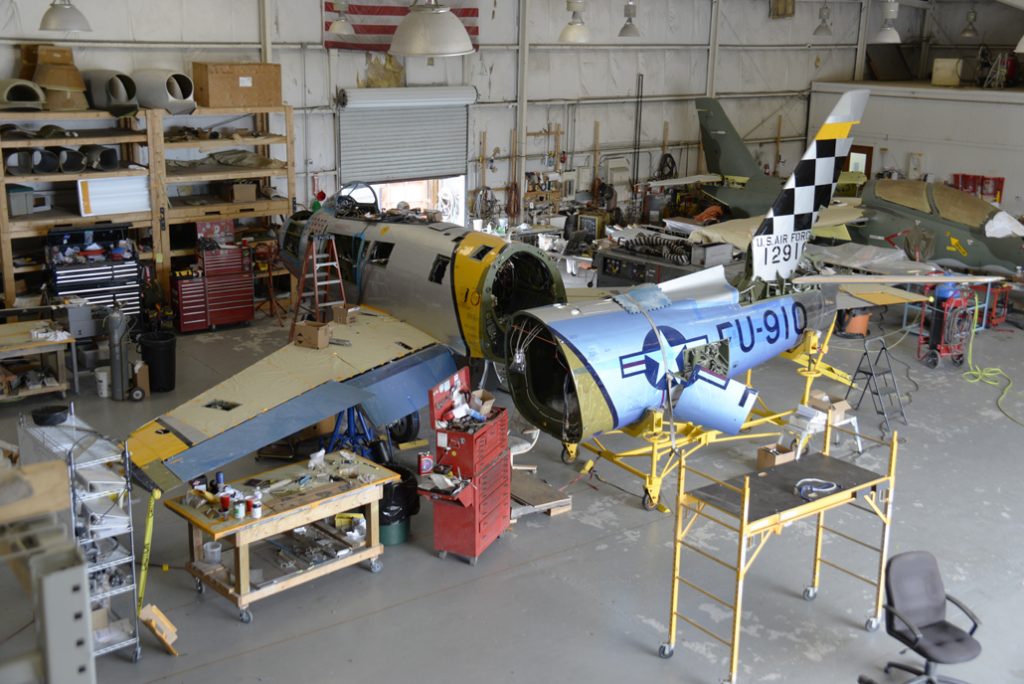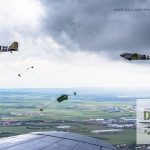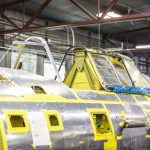The North American F-86 Sabre was a revolutionary aircraft when it first entered the scene in the late 1940s; the first American production fighter with a swept wing and transonic capabilities. It met with success in battle too, ending the Russian MiG-15’s dominance during the Korean War in the early 1950s. The type saw widespread use in nearly every Western-aligned nation, with factories set up outside the United states in Italy, Japan, Australia and Canada. The production run, with numerous different variants, reached almost ten thousand airframes, making it the most produced, Western-designed jet fighter in history. The typed lived on long after its days as a front-line fighter were over, serving ultimately as a remotely-controlled live target for pilots to hone their skills in the use of air-to-air missiles. A healthy number of Sabres have made it into civilian hands, with a number flying on the air show circuit, and several more under restoration to fly.
One of the latter examples belongs to well-known warbird pilot, Doug Matthews, who acquired F-86F-30 52-5116 in 2013. This aircraft served in the U.S. Air Force initially, before being reconditioned for service in Argentina. It joined the Argentine Air Force as ‘C-119’ in November, 1960, and flew with that nation until being withdrawn from use in 1986. Around 1989 Rick Sharpe re-imported her into the USA, and she has passed through a number of owners in the interim, including the Commemorative Air Force (her last owner). In seeking a suitable F-86 for this project, Matthews was keen to find an example similar to the one he already flies, F-86F 53-1201, which wears the livery of the famed Skyblazers aerial demonstration, forerunner to today’s USAF Thunderbirds.
Doug Matthews’ Classic Fighters of America is conducting the restoration in Titusville, Florida which will include a completely new electrical system, among other details. Matthews is having the aircraft painted to resemble F-86F 51-2910 BEAUTEOUS BUTCH II, one of the Sabres which famed jet-ace Captain Joseph McConnell flew from Suwon Air Base during the Korean War with the 39th Fighter Interceptor Squadron, 51st Fighter Interceptor Wing. McConnell is credited with shooting down sixteen MiG-15 jet fighters during the conflict, while damaging an additional five examples.
Captain McConnell is America’s highest-scoring jet ace, but interestingly, he started out as a navigator on B-24 Liberator bombers during WWII, flying on sixty combat missions. He stayed in the military after following the Allied victory though, and pursued his dream of becoming a fighter pilot; earning his wings at Williams AFB, Arizona in February, 1948. He joined the Korean conflict, quite late, arriving for service in September, 1952. All of his victories came between January and May, 1953, with the first eight being scored in F-86E-10 51-2753. McConnell had each of his fighters painted with the name Beauteous Butch on the side in honor of his wife Pearl, whose nickname was “Butch”. His second Sabre was F-86F-15 51-12971 however, a Chinese MiG-15 pilot named Daoping Jiang got the better of him on April 12th, 1953, shooting him down over the Yellow Sea. Fortunately, McConnell managed to eject from his stricken fighter, and a rescue helicopter plucked him from the water and brought him safely home. He was back flying in combat the following day though, and shot down another MiG-15. The third Sabre which McConnell flew in combat successfully was F-86F-1 51-2910. He shot his final two MiG’s and damaged a third on his final combat mission on May 18th, 1953. His Sabre was painted in his honor following this mission, renamed now as BEAUTIOUS BUTCH II.
McConnell was sent home to the USA, where he took up a posting with the Sabre-equipped 445th FS at George AFB in Apple Valley, California. Soon after, he took up a prestigious posting as a test pilot under secondment at Edwards Air Force Base to evaluate the then-new F-86H variant. While conducting a test flight in the 5th production example, F-86H-1-NA 52-1981, on August 25th, 1954, the aircraft experienced a serious control-system failure and crashed. Sadly, McConnell lost his life in the accident. His legend lives on though, and will be rekindled for the aviation-minded public when Doug Matthew’s new Sabre flies…
As mentioned earlier, F-86F 52-5116 is presently under restoration at Doug Matthew’s shop, Classic Fighters of America in Titusville, Florida. With the aircraft in sections consisting of the forward and aft fuselages, and the wings removed, Cris Kaufmann began the process of removing the old paint. He started blasting the exterior with crushed walnut shells to safely strip off much of the old paint without damaging the metal, then used conventional paint stripper to remove the rest. A wash of sand and acid followed, with the application of Bonderite® to finish up. Next came a treatment of self-etch and epoxy primer. Minor dents and flaws in the fuselage panels were repaired at this point and then the team sprayed a layer of high-build primer on the airframe. After this dried, the primer received a gentle sanding in preparation for the first coating of paint. Layers of silver and clear coat went on. Once the paint is applied and set, a final layer of clear-coat went on.
After the painting comes the research, creation and application of the numerous decals that the aircraft were adorned with. Attention must be paid to which series of F-86F that 51-2910 was a part of, as this will dictates what markings, from warning signs to squadron insignia, are needed and where they were placed on the airframe.
Restoration efforts with F-86F 52-5116 have been ongoing for some time now, as extensive inspections, upgrades, and cockpit modernization are nearing completion. Hydraulic lines have been replaced, the storage capacity of breathing oxygen has been increased, a new instrument panel is being prepared and an entirely new wiring system has been fabricated and installed. Everyone at Classic Fighters of America is excited about the impending maiden flight of this Sabre and evaluation trials which will begin soon!







